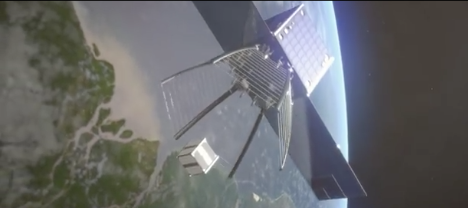[SatNews] "This system is more reliable and offers a larger margin for manoeuvring than a claw or an articulated hand."
A Swiss spacecraft plans to become a "real life Pac-Man" and swallow tiny satellites in orbit around the Earth.

A giant Pac-Man to gobble up space debris.
The EPFL Center for Space Engineering, working with eSpace, Geneva's University of Applied Science and Signal Processing 5 Laboratory, has announced details of a plan to capture its tiny SwissCube satellites by using a new spacecraft outfitted with a conical net.
The CleanSpace One mission was conceived shortly after the SwissCubes were launched, as part of a test for more widely-applicable systems to reduce the amount of space junk in the atmosphere, which its a constant scourge for orbiting hardware. NASA monitors pieces of debris larger than 10cm cubed, but actually recovering and removing this junk rather than just tactically avoiding it is a long-standing conundrum.
The researchers say that one of the most difficult aspects of the mission will be finding the tiny four inch-cubed satellites in the first place. The team has built a camera for the task which looks for tell-tale glints of light from the cubes as they rotate, before positioning itself and closing its net to snare them. The craft would then reenter the atmosphere and burn up along with the SwissCubes.
"This system is more reliable and offers a larger margin for manoeuvring than a claw or an articulated hand," said Michel Lauria, professor of industrial technology at the University of Applied Science.
It's not easy, though. The cube reflects light differently at various points on its surface, and isn't easy to see, requiring carefully honed software before any launch. And it's crucial the team don't make a mistake; Muriel Richard-Noca, head of the project, said in a statement that "it only takes one error in the calculation of the approach for SwissCube to bounce off CleanSpace One and rocket out into space".
The system has passed the prototype stage, the Swiss researchers said, and is on course for a launch in 2018 pending further development and testing.
Story by Michael Rundle in Wired UK

